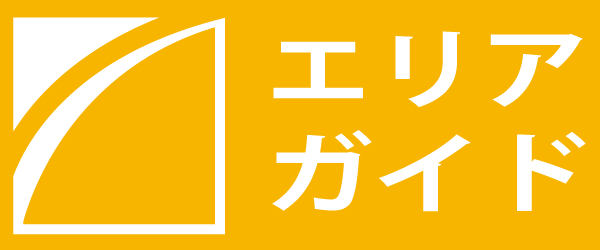新潟県上越市の高田城(たかだじょう)は、「鮫ヶ城」の別名で知られる新潟県指定史跡です。「続日本100名城」に選定された城で、慶長19年(1614年)に築城されています。上越市発足20周年記念事業として平成5年(1993年)に「高田城三重櫓」が再建されました。
高田城のアクセス方法と駐車場
高田城は上越市の高田城址公園として整備されています。
JR上越妙高駅からは車で15分、上信越自動車道の上越高田インターチェンジから15分ほどとなっています。
公園内には無料駐車場がありますので、高田城のシンボル三重櫓にもすぐにアクセスできます。
高田城のライトアップと三重櫓の開館時間延長
高田城址公園観桜会が4月上旬に開催されますが、高田城三重櫓の開館時間の延長とライトアップがこの期間内に実施されています。
ライトアップは日没から午後9時まで、高田城の桜の最盛期には日没から午後10時までライトアップも延長されます。
三重櫓の開館時間は午前9時から午後7時となり、観桜会期間中は無休で営業です。
また、江戸時代の高田城をコンピューターグラフィックスで再現したバーチャルリアリティ映像がが高田城三重櫓で体験できます。
高田城の御城印
令和2年から高田城では御城印の頒布を開始しています。
高田城の御城印は1枚300円で、高田城址公園のはずれにある上越市立歴史博物館で取り扱っています。
なお、同じ上越市にある上杉謙信ゆかりの春日山城の御城印は、上越市埋蔵文化財センターで取り扱っています。
高田城の歴史について
高田城の歴史について、現地の案内板には次のように書かれています。
■高田城跡
高田城は慶長19年(1614) に越後太守松平忠輝の居城として築城されたもので、石垣や天守閣はなく、御殿を中心に広大な城郭で構成されている平城です。築城は、幕府の命により国役普請で、仙台藩主伊達政宗ら13大名によって行われ、関川・青田川・儀明川の流路を変え、天然の地形を効果的に利用しました。外堀は関川の蛇行部を利用し、現野球場はかつて瓢箪曲輪 (ひょうたんくるわ)といい、川の中州でした。城の防衛は堅固で、背後は関川、前面は青田川を以て防衛線としました。平成5年に復元した三重櫓は御三階櫓と呼ばれ城のシンボルでした。城の広さは、本丸・二の丸・三の丸とあわせて約19万坪(約58ha)に達しています。本丸を囲む内堀は 薬研堀(やげんぼり)で、現在も満々と水をたたえ、昔日の面影を残しています。築城後は、歴代城主も変わり、更に寛文・宝暦・弘化の三大地震と度重なる大火によって被害を受け、明治3年(1870)には御殿が焼失しました。やがて明治41年(1908)には陸軍第十三師団司令部が設置され、城郭は一変しましたが、城跡の大半は残されました。現在東洋一と呼ばれる外堀のハスは、明治初年に農業用に植えられたものであり、日本の三大夜桜に挙げられている桜は、陸軍第十三師団の入城を記念して明治42年(1909)に在郷軍人会によって植えられたものです。 なお、高田城は別名を鮫が城・関城・螺城とも呼び、雅名を高陽城といいました。Takada-jo ato
(Remains of Takada Castle)
Takada Castle was constructed as a residence of Lord Matsudaira Tadateru who ruled Echigo in the 19th year of Keicho or 1614. It was noted as a Hirajo, a castle built on a flatland having no stone walls or castle tower, but consisting of vast enclosures around the castle, centering on a palace. The feudal government ordered regional administrations to build castles, so 13 daimyos or feudal lords such as Masamune Date, feudal lord of the Sendai clan, built castles by changing the courses of the Sekikawa River, the Aotagawa River and the Gimyogawa River to take advantage of the natural geography. The present outer moat utilized the snaking part of the Sekikawa River and the present city-operated ball park used to be called Hyotan Kuruwa, gourd enclosure, which was a sandbar of the river. Defense for the castle was very solid as the Sekikawa River defended it from the rear and Aota River defended it from the front. Sanju Ro, a triple turret which was restored in the 5th year of Heisel and called Gosakai Yagura, used to be a symbol of the castle. The area of the castle extended to 58 hectares including Hon maru, Ni no maru and San no maru. The inner moat surrounding Hon maru is Yagen bori(pharmacological moat), and is still filled with water remaining from the old glory days. After the construction, the successive lords of the castle changed, and it was damaged by the three big earthquakes of Kanbun, Horeki and Koka and by repeated fires, Eventually all of the palaces were destroyed by fire in the 3rd year of Meiji, 1870.In the course of time, the headquarters of the 13th division were established there in the 41st year of Meiji or 1908, and the castle changed completely. However, the greater part of the ruins of the castle remained. The lotus flowers in the outer moat which are considered as No.1 in the East at present, were planted for agricultural purposes at the beginning of the Meiji era. And the cherry blossoms, nominated as one of the top three night cherry blossoms in Japan were planted by the Association of residential servicemen in commemoration of the establishment of the 13th division headquarters in the 40s of Meiji era (1907-1912) Lastly. Takadajo is also known as Samegajo, Sekijo and, Rajo. Its gracious name is Koyojo.

